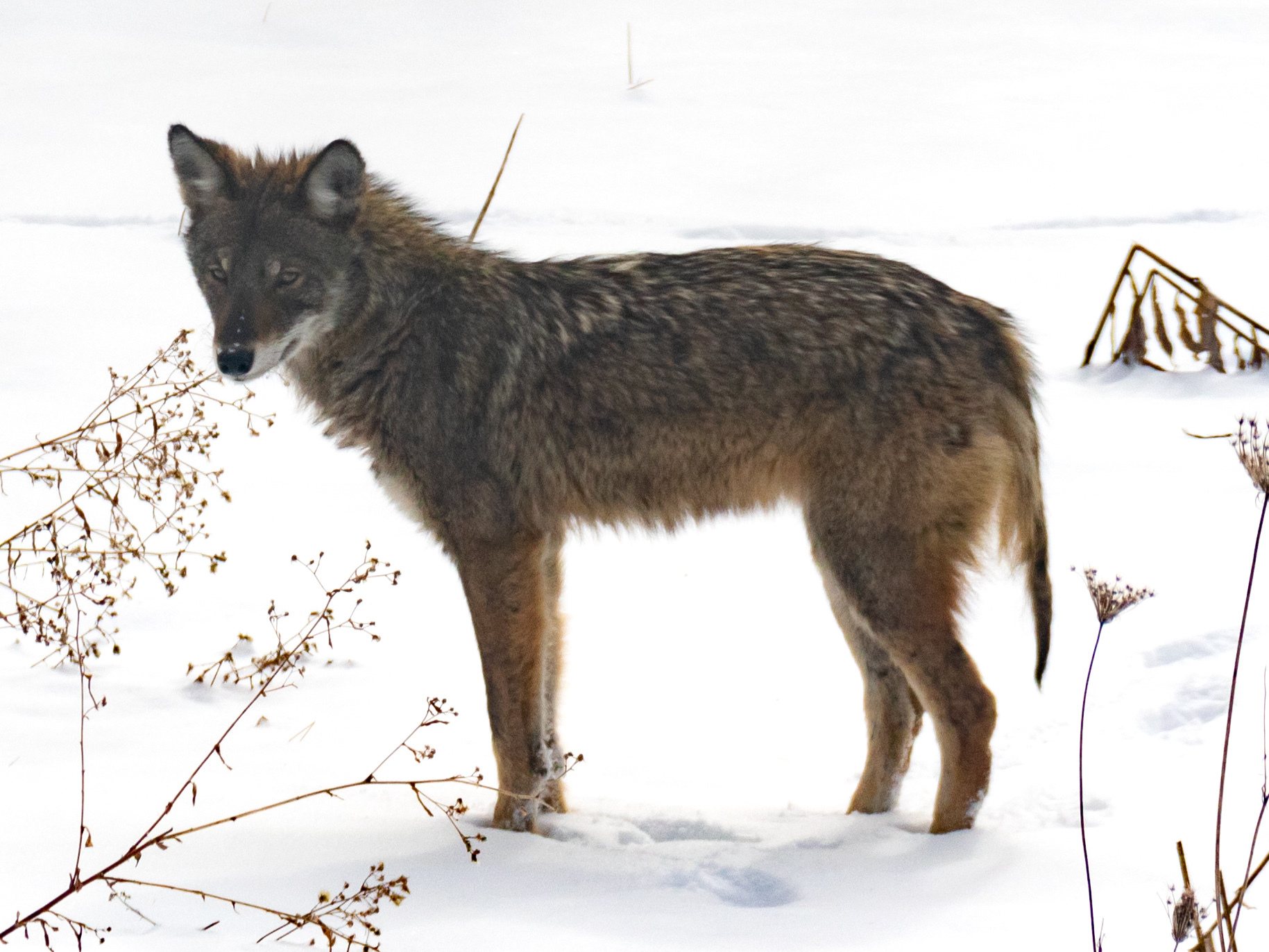How Do Deer and Coyotes Survive Our Winters?
Published Dec 1st, 2022 by Suzanne Leiter
 Vermont coyote. Photo credit iNaturalist, Alex Goodfriend.
Vermont coyote. Photo credit iNaturalist, Alex Goodfriend.
Now and then we hear the wilder voices of the wilderness, from animals that in the hours of darkness do not fear the neighborhood of man: the coyotes wail like dismal ventriloquists, or the silence may be broken by the snorting and stamping of deer.
Theodore Roosevelt
In the mid-to-late-autumn in my part of Norwich, the coyotes make themselves known with their exuberant yips and howls that echo off the wooded hillsides. The deer, by contrast, are cautious and quiet – but no less noticeable for the havoc they wreak on the lower branches of fruit trees, shrubs, and a myriad of perennials such as hostas.
Once winter hits, the deer stray from their nocturnal habits, venturing about during the warmer hours of the day. For their part, the coyotes are more likely to hunker down when they are not roaming wide areas to forage. (The coyotes will start to sing again in February during their breeding season.)
When the winter days and nights are the coldest – when the anemic sun barely warms temperatures to above 0°F – I often think of these large mammals. How do they stay warm enough in their basic shelters to make it to another spring, and what do they eat when the ground is frozen?
Deer are completely vegetarian. They eat leaves, flowers, berries, grasses, acorns, other nuts, fungi, twigs, and bark. In a snowy Vermont winter, deer browse on twig tips, buds and other woody morsels. To get the nutrition from food that is so hard to digest, deer have four stomach chambers – like cows, they are ruminants.
Deer choose areas filled with evergreen trees for their winter deer yards. The wide branches reduce the snow depth underneath and give deer some protection from the wind. When winter sets in, deer may move 10 to 15 miles to go to a yard.
Deer that don’t survive these winter rigors may well feed scavenging coyotes or other carrion feeders. Or, if deer are weakened by cold and hunger, or hampered by deep snow, coyotes may bring them down.
Coyotes are Vermont’s largest mammalian predators in the absence of wolves, which were wiped out in the late 1800s. Eastern coyotes diverged from their western counterparts, bulking up by breeding with eastern wolves in southern Canada before moving into our area many decades ago. Eastern coyotes adapted well to our environment. They can live closely with people and eat a variety of foods. Coyotes’ diet comprises whatever is easy to find, scavenge, or catch – which means not just deer, but smaller animals killed by winter. In warmer seasons, they’ll eat fruit and other plant matter.
Coyotes do not migrate. They are year-long residents, typically within a home range. They prefer sheltered areas – rocky ledges, tree overhangs for protection from the elements – and use dens to raise their young in late April into May. They may become territorial as they establish their dens and defend a home range. Mated pairs are known to stay together for life while young males may join together and usually are forced to move away from their parents to find suitable hunting territory.
Eastern coyotes’ larger size, thick bushy coats and long tails enable them to survive in our cold, snowy winters.
In early spring, female coyotes use dens for raising pups and often stay close to these sites. Male coyotes may travel greater distances to hunt more intensively while seeking additional food to support the female and pups.
Our warming winters in Vermont are killing fewer deer. I wonder how that affects coyotes? Perhaps the earlier onset of spring helps coyotes to resume their diet of small mammals and other available foods. Whatever the circum- stances, humans should never get involved in feeding these large mammals through the winter months.
Originally published in Holiday 2022 Norwich Times